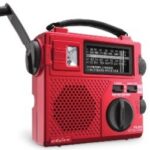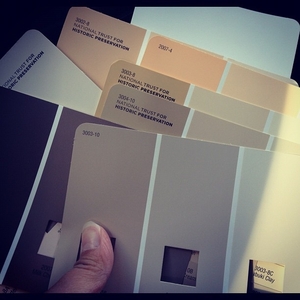Today’s topic: marine VHF radios, many of which are available these days for around $75. Easy and simple to use, squelch is oftentimes a poorly understood function among first-time VHF radio users. Squelch’s purpose is simple: you increase or decrease the squelch on your handheld VHF radio according to how sensitive (and receptive) you want your radio to be to transmissions and broadcasts from boaters in your immediate and not so immediate area. In short, squelch makes your radio more or less sensitive to what’s going on in the airwaves in your area.
In practical terms, here are some guidelines on when to increase and decrease the squelch on your VHF. Increase squelch when you went to filter out nearby and irrelevant radio chatter; decrease it when you need to hear everything being said in not only your immediate area but further away as well.
Here are two examples to help you consider how much squelch to use on your VHF radio. If you’re paddling with a group of sea kayakers where the other kayakers with VHF radios are say within a quarter mile to half a mile away, and you don’t anticipate needing to hear from anyone else further off, increase the squelch on your VHF until your radio is silenced.
In other words, raise the squelch on your radio until you hear nothing coming from the speaker: neither general airwave static nor the faint indistinct chatter of VHF radios users outside your immediate area — other boaters like sport fishermen, sailors participating in offshore regattas, or any other distant VHF radio users whose communications are neither interesting to you nor important.
By increasing your vhf radio’s squelch so that both static and distant communications between other VHF radio users are silenced, you filter out all broadcasts except those from the other boaters, and fellow paddlers, in your immediate area.
Similarly, just as increasing the squelch on your radio filters out both static and broadcasts from distant boaters who are distant (although eavesdropping can be informative and instructive if you need to learn vhf radio usage conventions), the opposite, lowering your VHF radio’s squelch, is also useful.
Let’s say for example you’re paddling solo or with a small group, and you hope to make radio contact with other paddlers, or other boaters, or a distant shore station, such as the Coast Guard — all of whom are likely to be distant from your present location.
In this case, you want to reduce your radio’s squelch until it allows your radio to emit from its tiny speaker a low, persistent level of static. Although the steady hiss of static trickling into your ear can be somewhat distracting, the upside is that you can remain relatively well assured that you’ve increased your VHF radio’s sensitivity enough that it will pick up those more distant communications.
The squelch on VHF radios is typically adjusted with a dedicated button, often labeled SQL. Adjusting squelch involves little more than pushing the SQL button and with either the radio’s thumb knob or a side-by-side arrow up, arrow down buttons, increasing or decreasing the squelch.
Typical scenarios for sea kayakers who don’t need to communicate with distant boaters is to turn on your VHF, adjust the volume level so that the static is just loud enough to be comfortable to your gears, then increase squelch just until the static is eliminated.
With VHF radio set up thus, you can rest reasonably well assured that your VHF radio will pick up the broadcasts only of VHF radio users in your immediate area or from others broadcasting with high-powered shore or ship-based radios: Coast Guard stations and cutters, search and rescue or law-enforcement operations, etc.




